Description
Drosera hookeri is a erect-growing tuberose from Australia. Like all tuberous plants it vegetates in winter (September to May) and goes into vegetative rest in summer, with the dry heat, forming the tuber.
Origin:
Australia
Description:
- Type: Tuberous Drosera
- Life-cycle: perennial (Summer dormancy)
- Form: erect
- Leaf: green
- Trap: green with pale tentacles with a small red dot
Additional info:
For more info & photos visit our blog and our page Facebook and Instagram.
Scope of delivery
- Vigorous plants, repotted in the current season, in high-quality soil
- Brick-coloured pot made of recycled plastic (6.5 cm diameter)
- Care guides
- Free access to our plant doctor care service
Care instructions
How we grow Tuberous Drosera?
In-vitro plants are acclimated in a Grow Chamber with controlled temperatures and humidity. This indoor setup ensure an easy adaptation to extra-vitro condition, guaranteeing the best conditions for plants in this delicate stage. All plants available at the Diflora shop have been acclimatized for at least 3 months. After this first step the plant is brought outside, under direct sunlight with the classic tray system as watering method and so, keeping always some amount of water in the tray. As with the majority of carnivorous plants, we use distilled water produced by our reverse osmosis system. We use this system only for easy to grow erect tuberous Drosera.
For rosetted-like tuberous Drosera we induce tubers formation in vitro and we acclimate tubers directly outside during the beginning of their vegetative season (from September)
Lighting:
Full sunshine during the vegetation months, which for us coincide with the months between September and May. In summer It’s not necessary to expose the pot with dormant plants (with only tubers inside) to full sun. Although tubers are very hardy it is preferable to place the pots under some shade during the summer months to prevent the excessive heat of a closed system such as a pot from damaging the tuber of the more delicate species.
Water and Summer/Winter management:
The tubers are a form of defense that these Sundews use to shelter themselves from the heat and dryness of the summer period. During the summer, the pots containing the tubers should not be watered because with too much water they could easily rot.
With the arrival of cool September we behave differently: we can start moistening the soil from above more frequently and then gradually watering from below, adding the classic 2-3 cm of distilled water in the saucer. In this way we will simulate the beginning of the rainy season and the tuberous sundews will sprout from the soil in a short time.
Substrate:
For less demanding tuberous sundews, the classic mix of 50% peat and 50% perlite is fine, however, almost all tuberous sundews grow on sandy soil so ideally use a mix of 30% acidic peat and 70% quartz sand.
Seasonality and temperatures:
Those tuberous sundews that are less demanding and can tolerate temperatures even around 10°C (e.g., Drosera foliosa, Drosera auricolata, Drosera hookeri…), grow just fine inside a cold greenhouse or double window. The classic places where we shelter subtropical sundews for the winter! Many growers use terrariums for the more demanding tuberous sundews, this solution is advisable only for prostrate-shaped sundews as upright tuberous sundews tend to grow too tall to manage inside an enclosed system.
Additional info:
For more cultivation information visit our care guides or use our plant care support by writing to ilpigliamosche@diflora.it
Source
Diflora has begun the propagation of this Drosera using seeds germinated in vitro in our laboratory. This specimen was chosen for its uniqueness in terms of shape and color, resulting in a distinctive product in the market.
Trapping technique
Drosera catch mainly small flying insects using sticky modified trichomes placed all over their leaves. These trichomes secrete droplets of water and polysaccharides attracting insects that are searching for sugary substances, like nectar. As the unawares visitors fatally fly on those sweet and lethal leaves, they stay glued and unable to fly away. It is caused mainly by droplet viscosity. Slowly, the dense liquid of the nearby trichomes wrap the insect causing a macabre destiny for the unlucky victim: the tracheas, respiratory holes placed on the surface of the exoskeleton of insects, are obstructed causing their death by suffocation.
| Cultivation | |
|---|---|
| Best Season | |
| Lighting Conditions | |
| Drosera – Special Features |


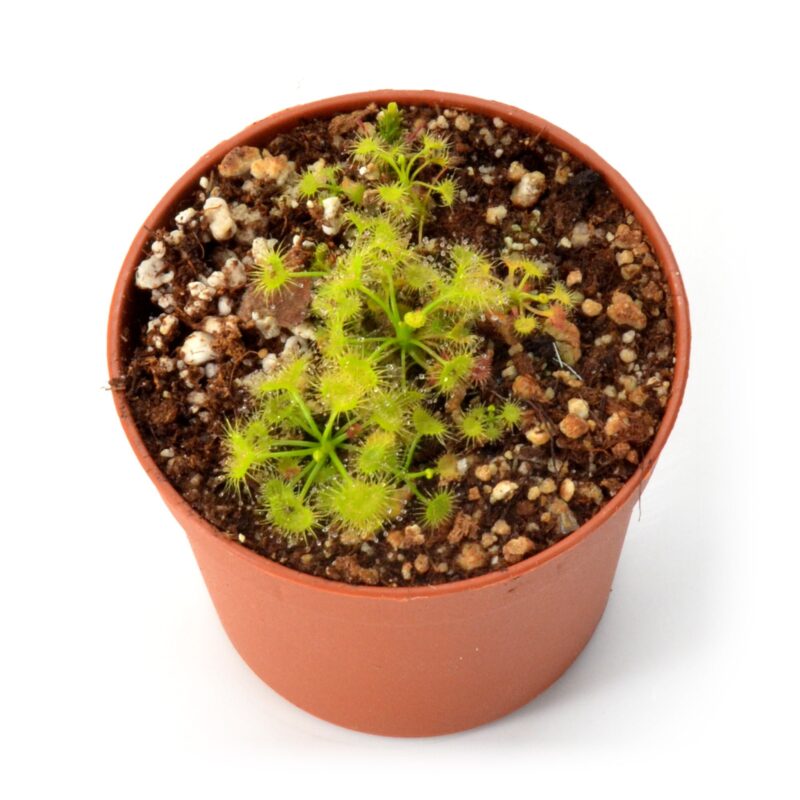




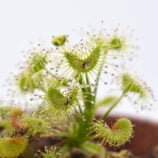

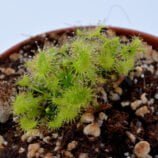

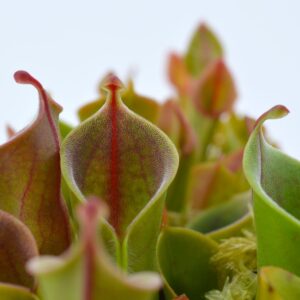

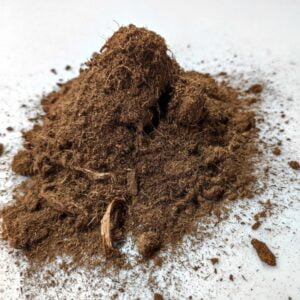


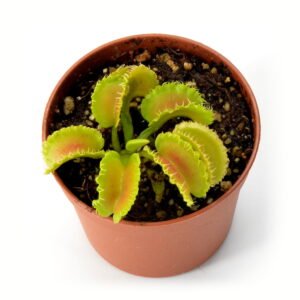
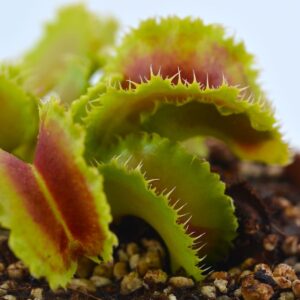
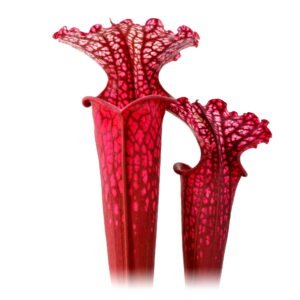
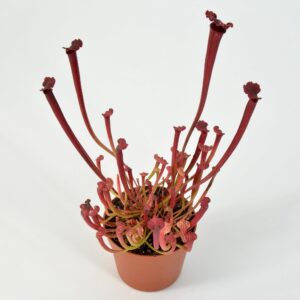

1 review for Drosera hookeri